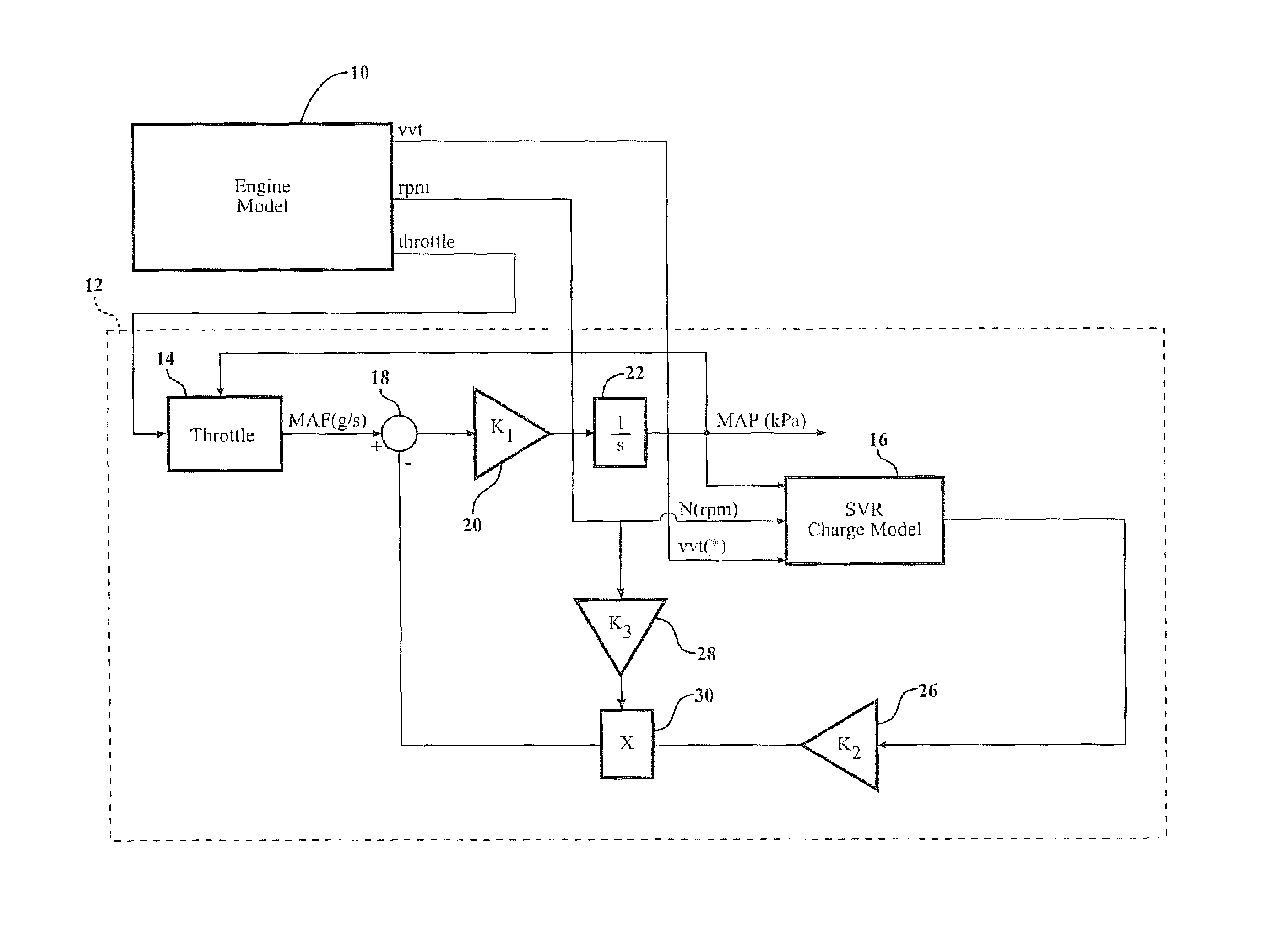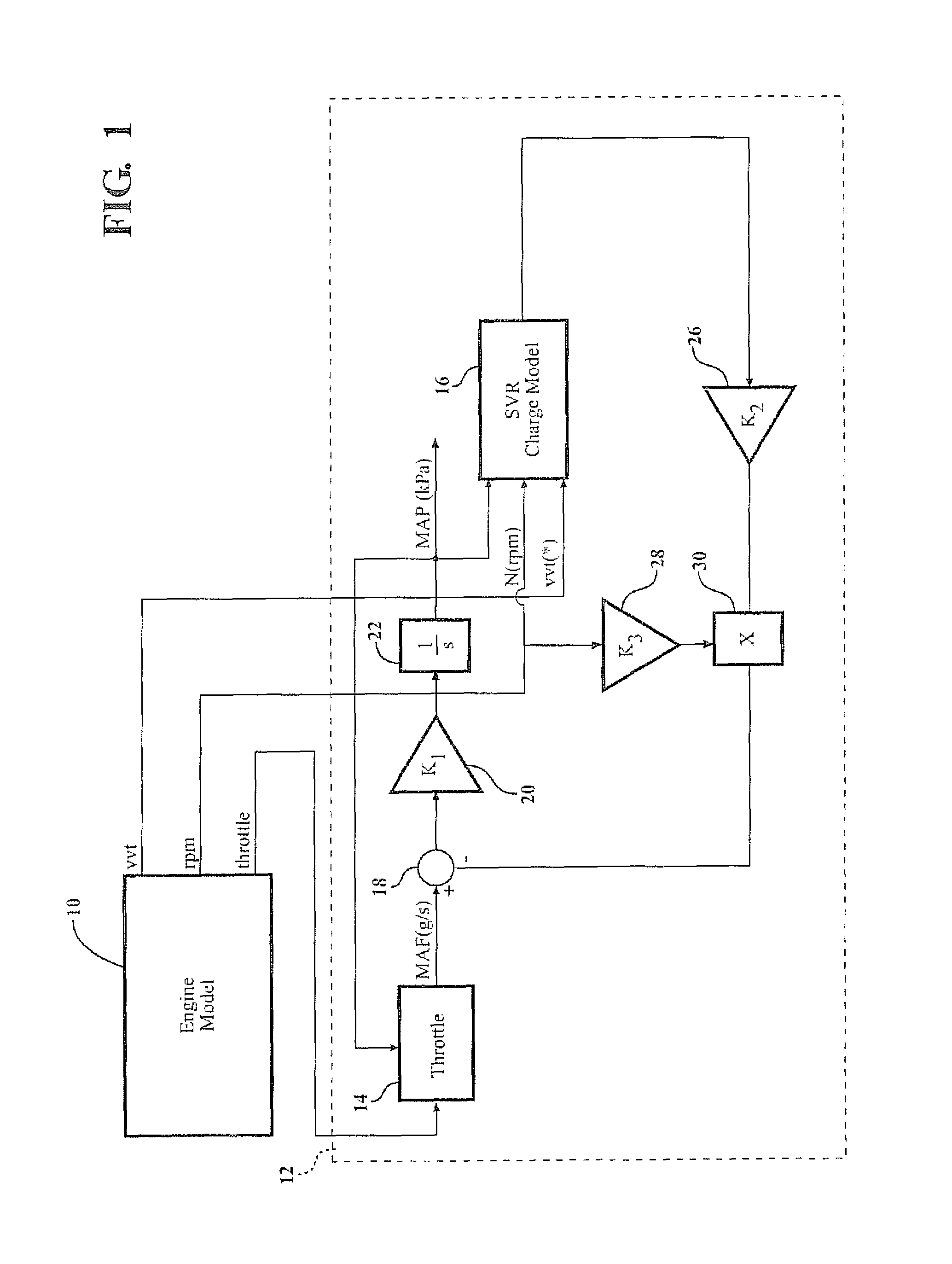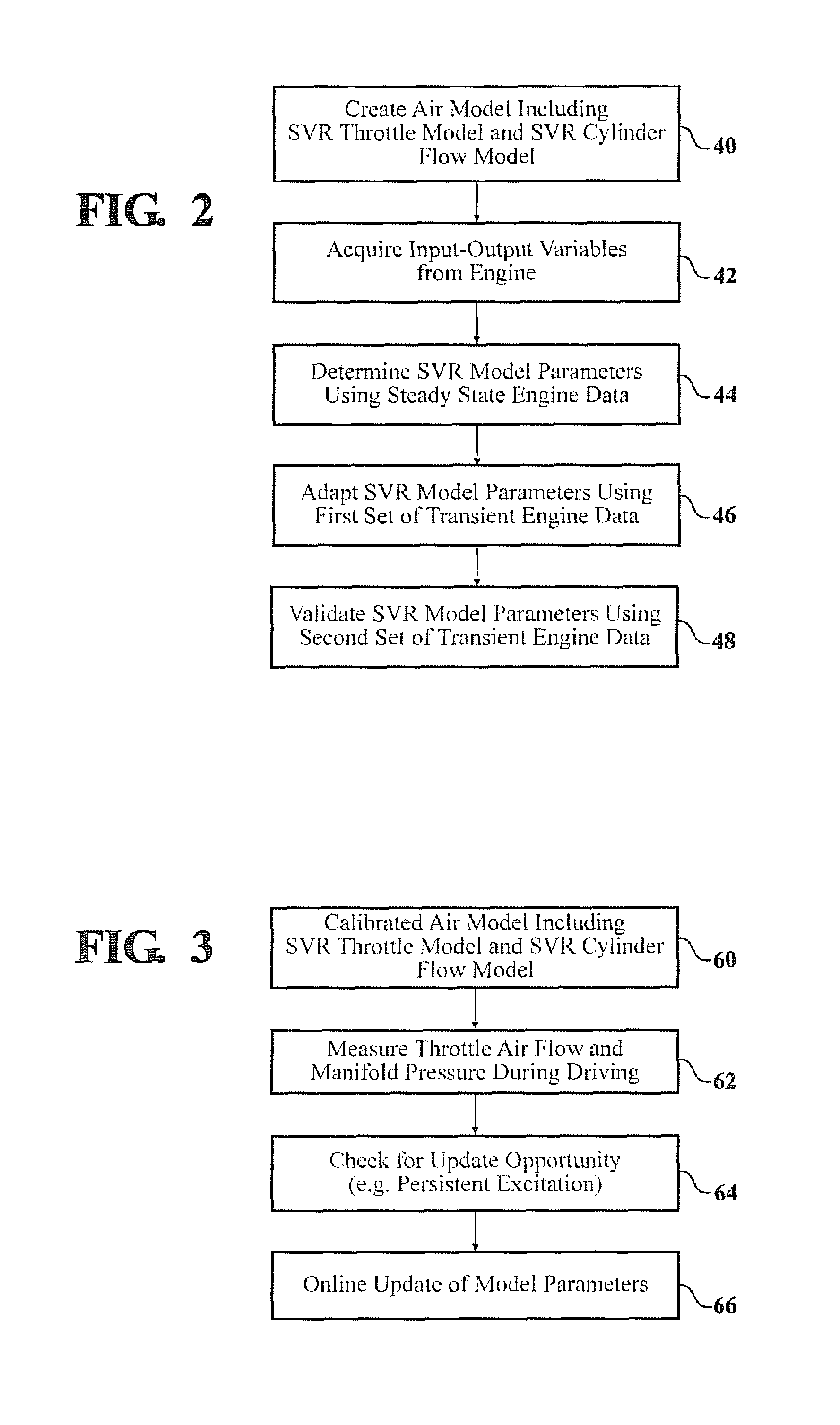Adaptive air charge estimation based on support vector regression
a support vector and air charge technology, applied in the field of air charge estimation, can solve the problems of difficult accurate air charge estimation and no direct measurement of air charge for the cylinder, and achieve the effects of reducing engine calibration complexity, excellent results, and improving accuracy
- Summary
- Abstract
- Description
- Claims
- Application Information
AI Technical Summary
Benefits of technology
Problems solved by technology
Method used
Image
Examples
Embodiment Construction
[0018]A linear programming support vector regression (LP-SVR) based air model was developed for estimation of air charge, and shown to give good performance using engine data. Novel adaptation methods allow the model to be updated online, for example during vehicle operation. The use of LP-SVR modeling provides great benefits, allowing parameter adjustments to be made that reflect a wide range of engine operating conditions.
[0019]An offline calibration process can be used to determine initial parameters for the SVR based air model, such as support vectors and weighting parameters, and an online updating procedure can be used to modify the weighting parameters during vehicle operation. The support vectors may remain unchanged during adaptive updating.
[0020]Examples include improved methods of estimating the air charge for one or more cylinders during engine operation, an improved initial calibration process, and a method of model adjustments during vehicle operation.
[0021]Previous mo...
PUM
 Login to View More
Login to View More Abstract
Description
Claims
Application Information
 Login to View More
Login to View More - R&D
- Intellectual Property
- Life Sciences
- Materials
- Tech Scout
- Unparalleled Data Quality
- Higher Quality Content
- 60% Fewer Hallucinations
Browse by: Latest US Patents, China's latest patents, Technical Efficacy Thesaurus, Application Domain, Technology Topic, Popular Technical Reports.
© 2025 PatSnap. All rights reserved.Legal|Privacy policy|Modern Slavery Act Transparency Statement|Sitemap|About US| Contact US: help@patsnap.com



